These easy lemon macarons are perfect balance of sweet and sour. Bursting with zesty flavor, these macarons are incredibly fun to make!
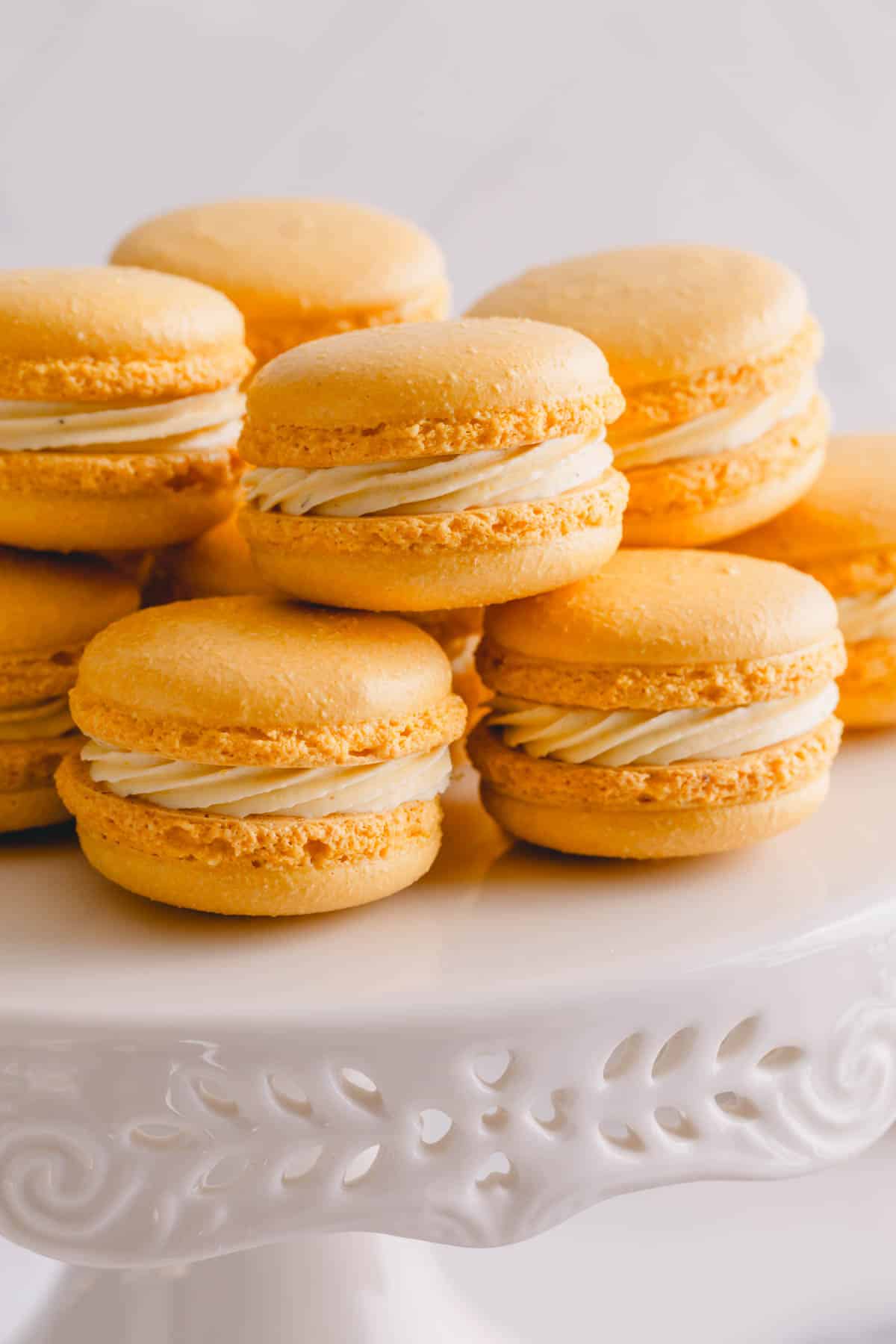
Table of Contents
- Why you’ll love these lemon macarons:
- Key Ingredients:
- How to make lemon macarons:
- 1. Sift the dry ingredients
- 2. Make the meringue
- Achieve sturdy meringue
- 3. Mix the macaron batter
- 4. Shape and bake the macarons
- 5. Make lemon buttercream:
- 6. Fill and mature the macarons:
- Macaron Tips for Success:
- Make-Ahead Tips:
- Storing Tips:
- Macaron FAQs:
- Lemon French Macarons Recipe
Why you’ll love these lemon macarons:
Zesty buttercream and homemade lemon curd make these bright yellow macarons burst with citrusy goodness through and through!
This lemon macaron recipe is a perfect way to experiment with flavored macaron shells. If you’re new to making macarons, I highly recommend starting with plain macaron recipe first.
You’ll love these lemon macarons, because they are…
- pleasantly chewy with a soft, creamy filling
- beautiful and impressive treats for celebrations
- way more affordable than store-bought
- and perfect make-ahead treats!
All you need is a solid recipe and a bit of practice to master these dainty treats!
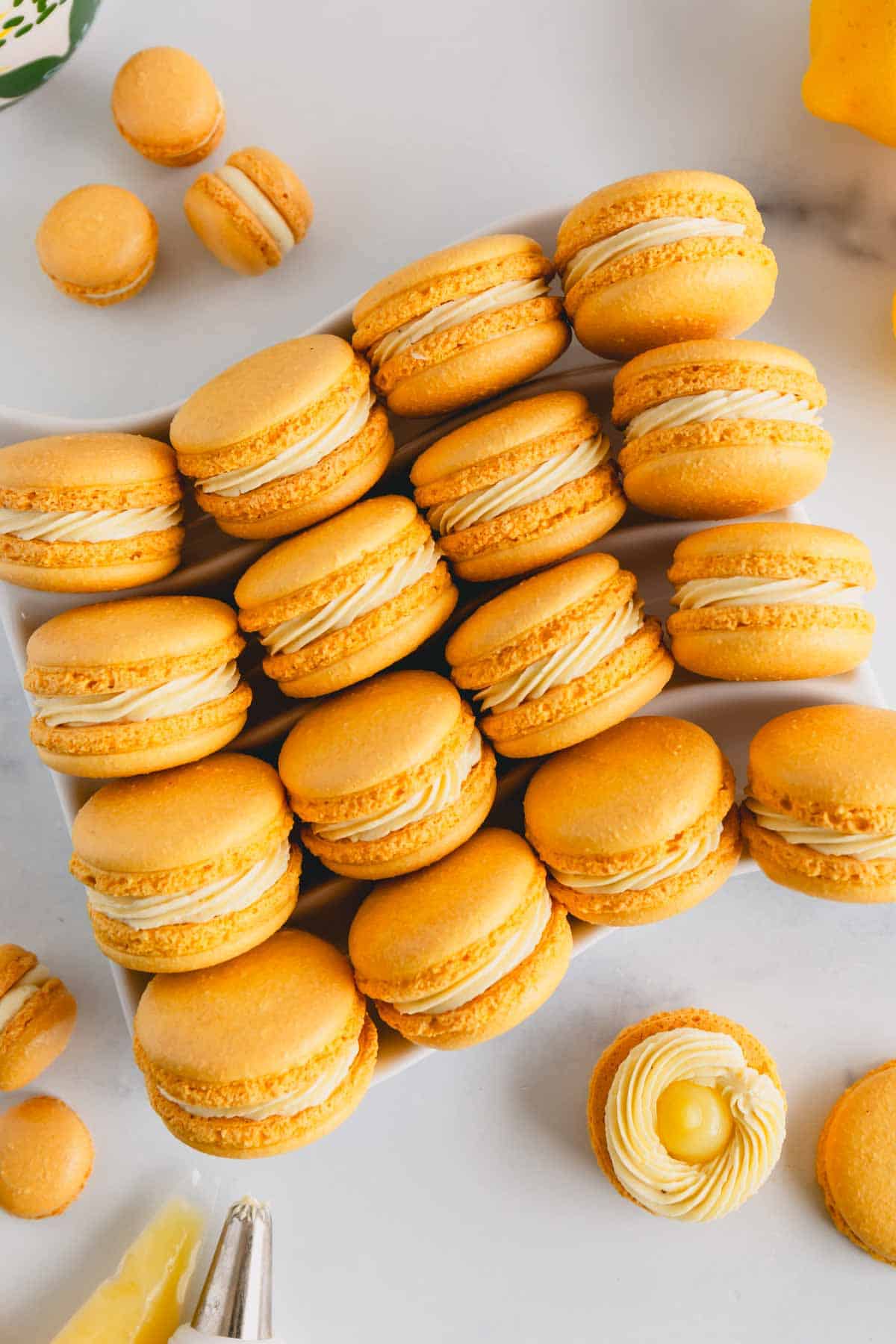
Key Ingredients:
Measure the macaron ingredients in grams with a kitchen scale. This intentional step leaves no wiggle room for error, maximizing your success!
For the macaron shells:
- Almond flour – Use high-quality fine almond flour, preferably freshly opened package. Old almond flour tend to be oily, causing issues like, thin wrinkly shells. Also, if it smells rancid instead of nutty, toss it and buy a new bag.
- Powdered sugar (aka confectioners sugar, or icing sugar) is another crucial ingredient. And I highly recommend store-bought one, as they have cornstarch mixed in.
- Egg whites – You don’t need to age egg whites for making macarons. Both freshly cracked egg whites and carton egg whites work perfectly fine.
- Cream of tartar – The dry acid is totally optional, but it helps to stabilize your meringue. Stable meringue is the foundation of beautiful macarons. If you don’t have cream of tartar, simply omit it.
- Granulated sugar – Super fine sugar quickly dissolves into the egg whites to create a thick and silky foam. The sugar stabilizes the tiny air bubbles for a sturdy meringue.
- Lemon zest & juice – I highly recommend using a whole lemon.
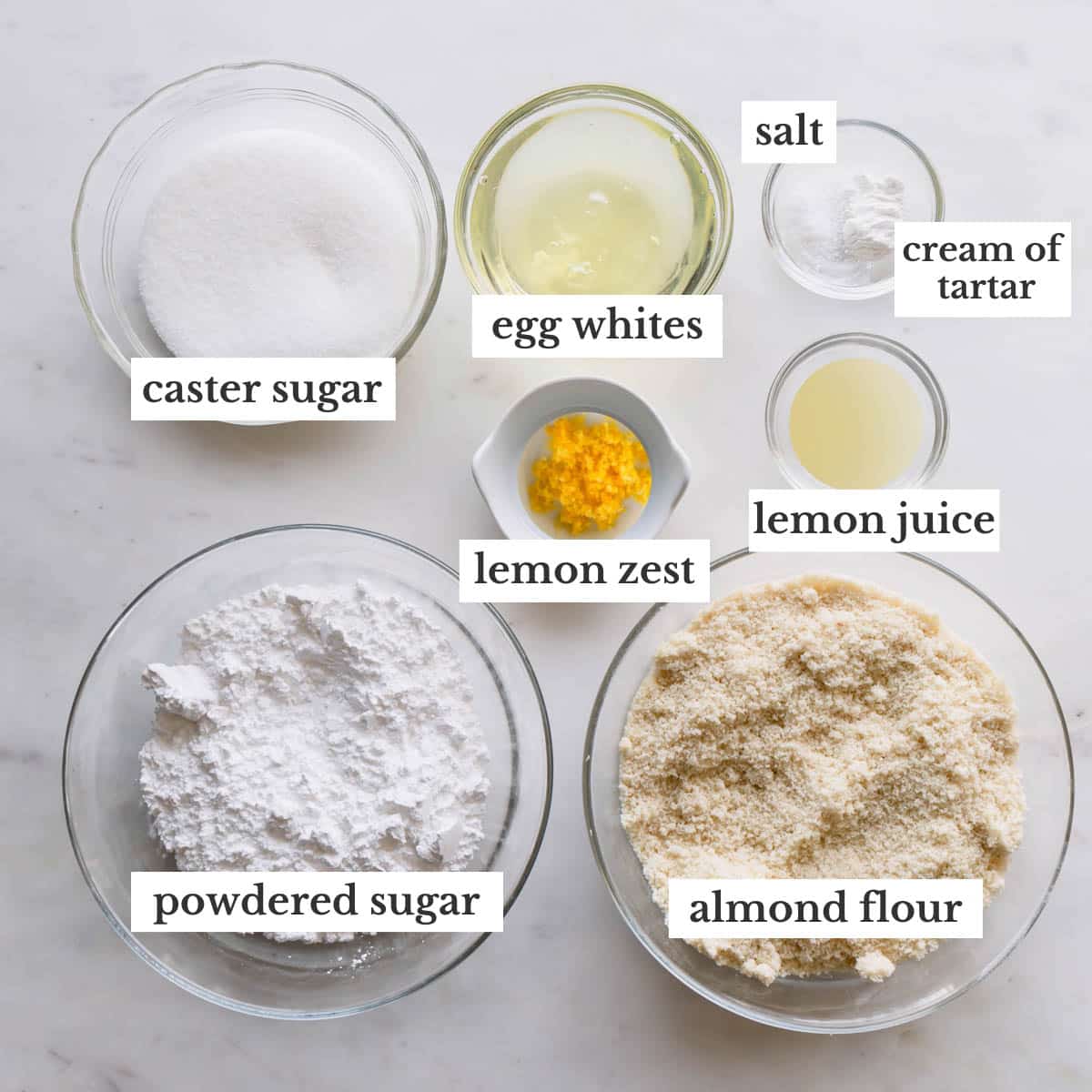
For the lemon buttercream:
- Unsalted butter – Room temperature buttercream is crucial for fluffy texture!
- Powdered sugar thickens and sweetens the buttercream! Powdered sugar is finer than white sugar for a smooth and silky frosting.
- Salt is the secret to well balanced flavor!
How to make lemon macarons:
Follow this lemon macaron recipe exactly for perfect macarons! Resist the urge to skip steps or substitute ingredients.
1. Sift the dry ingredients
- Sift the almond flour and powdered sugar 3 times. Third time, you may sift it directly into the meringue.
TIME-SAVING TIP: If you have a stand mixer, sift the dry ingredients while the meringue is whipping.
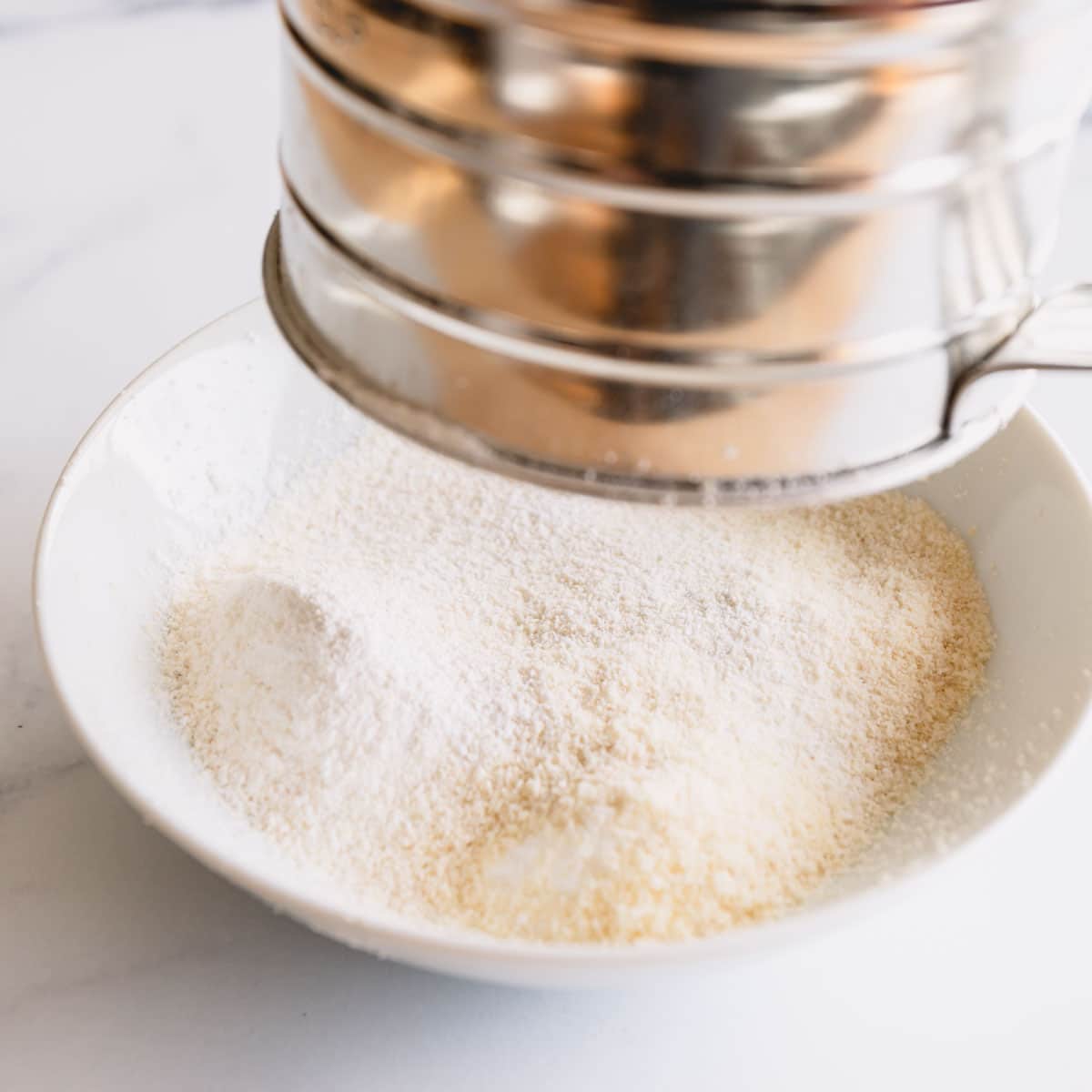
2. Make the meringue
Meringue is the foundation of successful macarons. French meringue is my go-to method when it comes to making macarons.
- Combine egg whites, granulated sugar, cream of tartar and salt and beat the mixture on medium speed until soft peaks form.
- Add lemon juice and yellow food coloring and continue to beat until stiff peaks form.
- Check the meringue. You want to see a nice defined ridges as pictured below.
Achieve sturdy meringue
Slow and consistent speed is key to achieving the sturdiest meringue when it comes to French method. The exact time depends on each mixer. Don’t rush this process. It can take up to 40 minutes to reach stiff peaks!
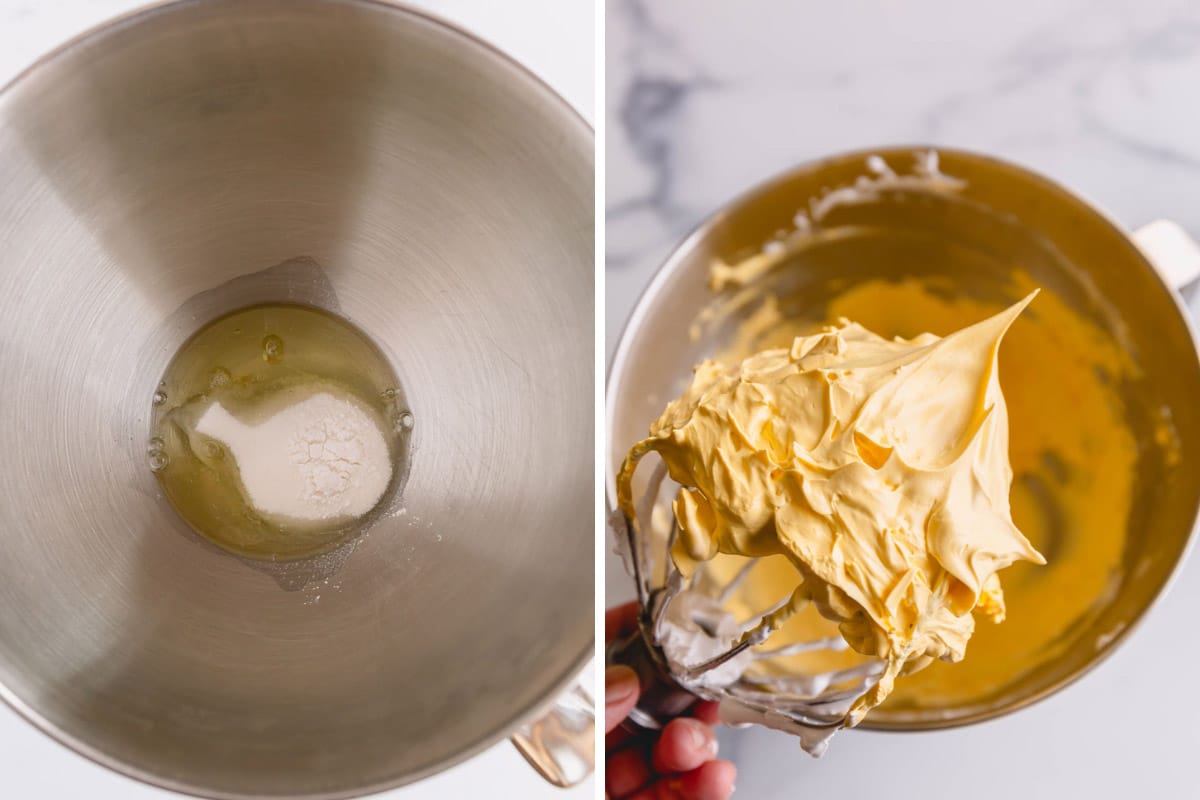
2023 UPDATE: In the last year, I’ve changed my French meringue technique to combining the egg whites, sugar, salt and cream of tartar from the start instead of adding sugar slowly into lightly whipped egg whites. I found this meringue method works better for macarons.
3. Mix the macaron batter
- Add lemon zest and sift the dry ingredients into the meringue.
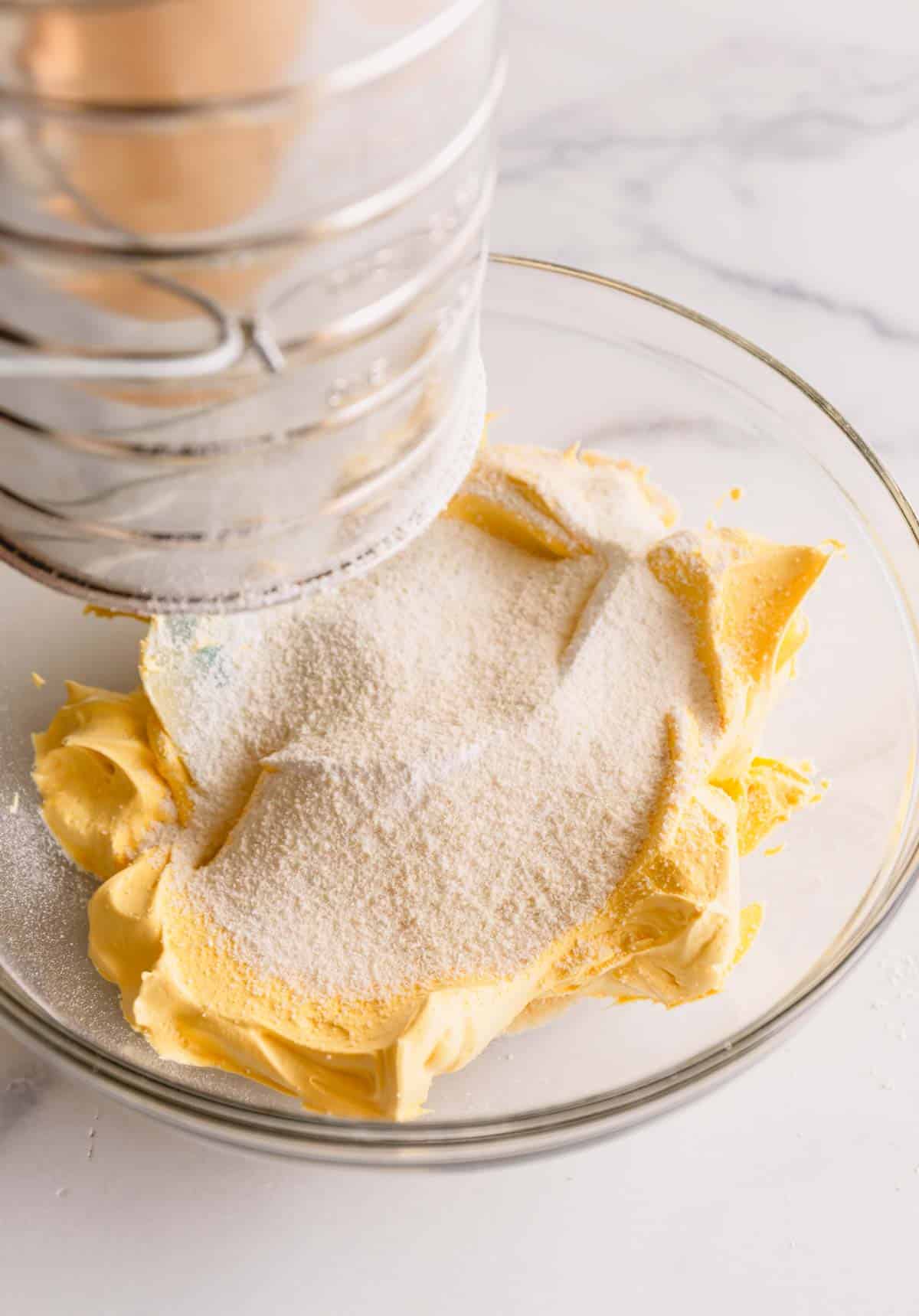
don’t deflate the meringue
Adding lemon zest too early on may deflate your meringue due its oil content. That’s why it’s best to add it along with the dry ingredients.
- Fold the dry ingredients into the meringue using a large silicone spatula. Run your spatula down the side of the bowl to the bottom, and then cut through the center of the batter. You don’t have to be too gently, but also don’t rush through the process.
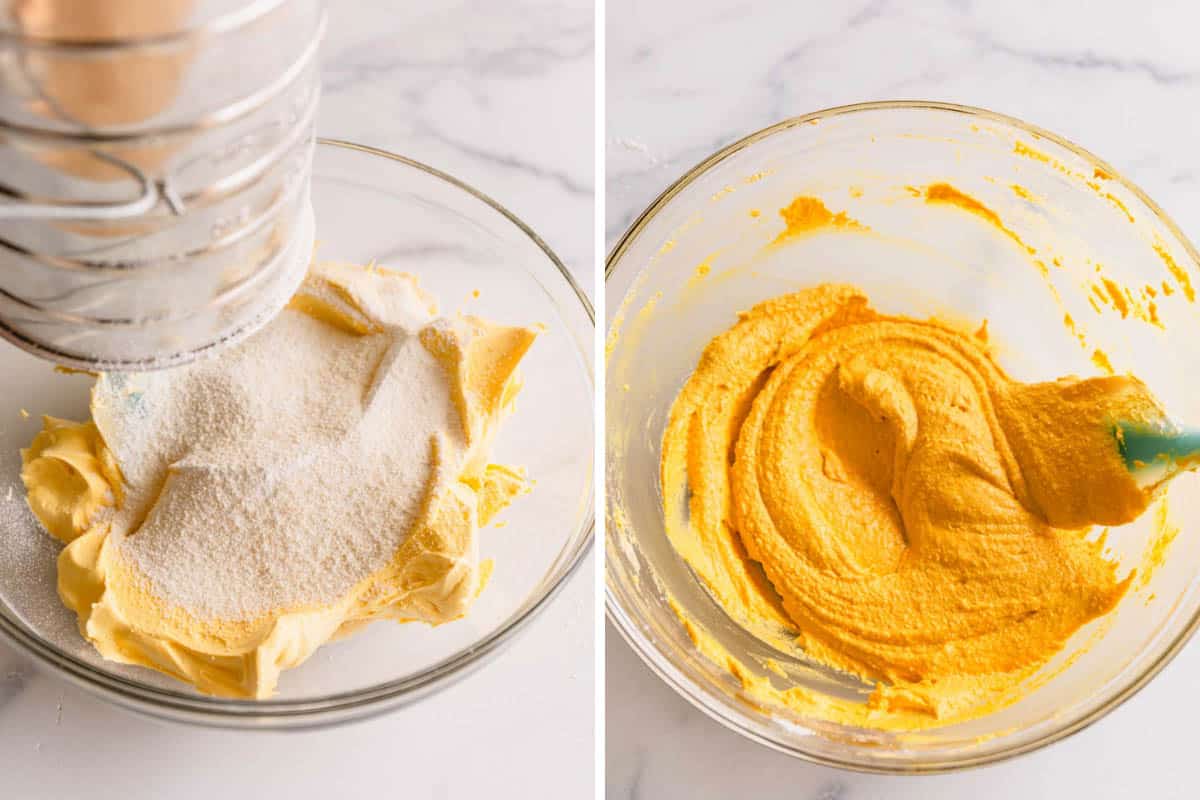
- Test the batter consistency when the batter starts to flow off the spatula. Scoop some batter with your spatula and slowly drop it back into the bowl into a ribbon.
- Slightly tilt the bowl and observe the batter that you just dropped. If the edges of the ribbon dissolve into the rest of the batter within ten seconds, the batter is ready!
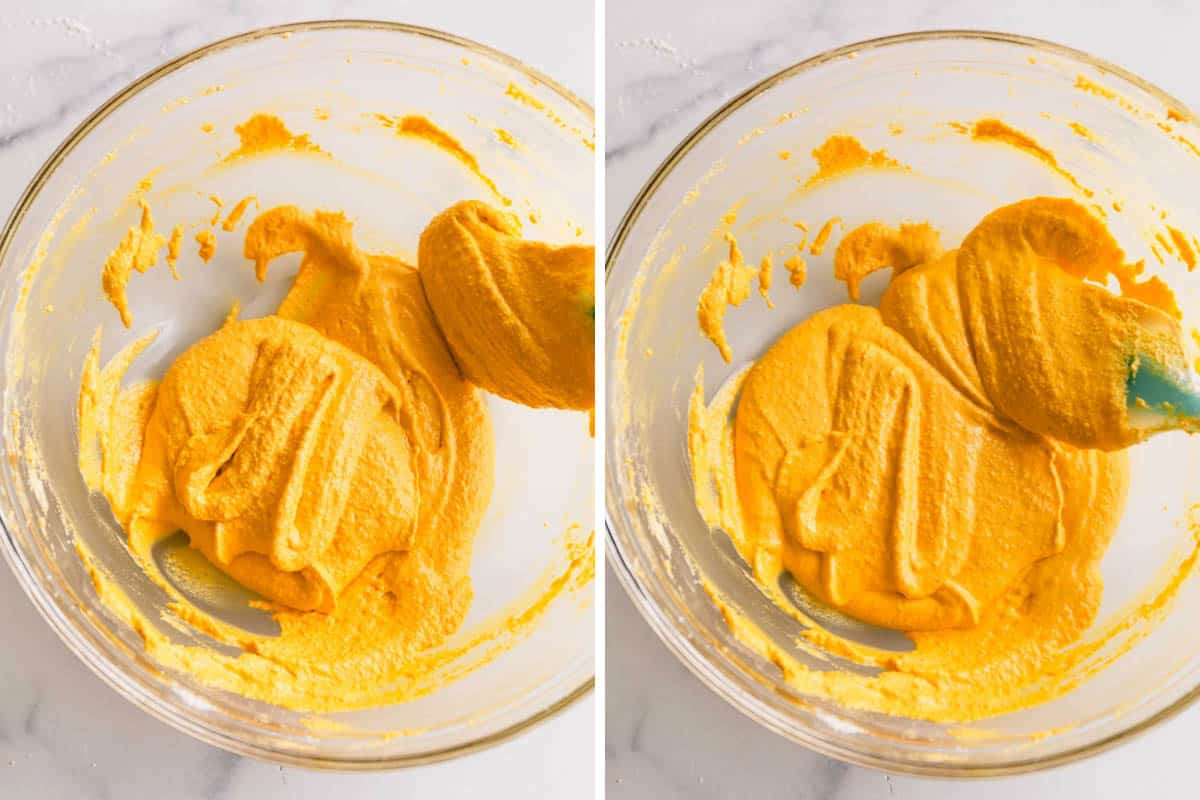
4. Shape and bake the macarons
- Transfer the batter into a large piping bag with a round tip. ( I prefer Wilton 2A tip.)
- Pipe the macarons onto parchment-lined baking sheet about an inch apart. Hold the piping bag straight at 90°. Then gently squeeze the batter from the top until the batter spreads into a 1.5-inch circle.
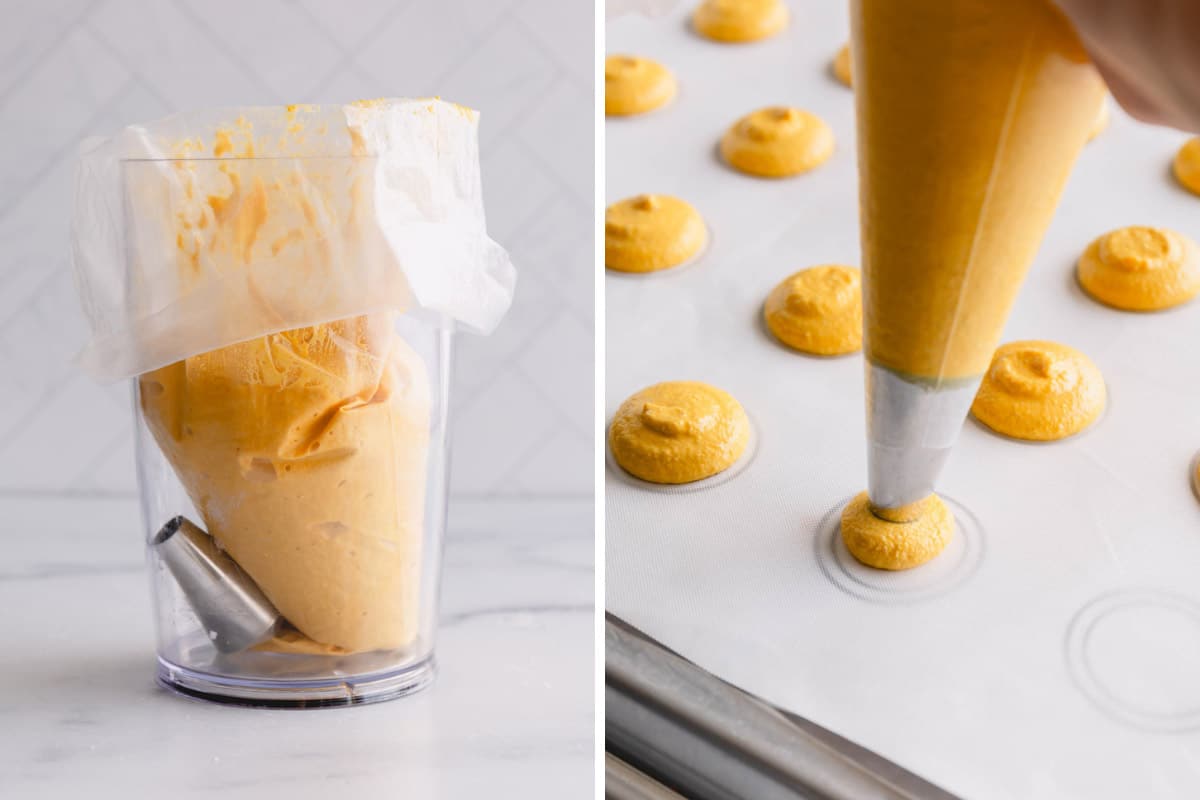
free Macaron template
I made a perfect template for you. Subscribe to my e-mail list and download this custom macaron template for FREE. (This template is perfect for my recipe and super easy to use!)
- Tap the sheet pans to smooth out the shells and remove any air bubbles. Use a toothpick to pop any bigger bubbles. This will give you beautiful, smooth tops! Let the macarons rest for 15 minutes.
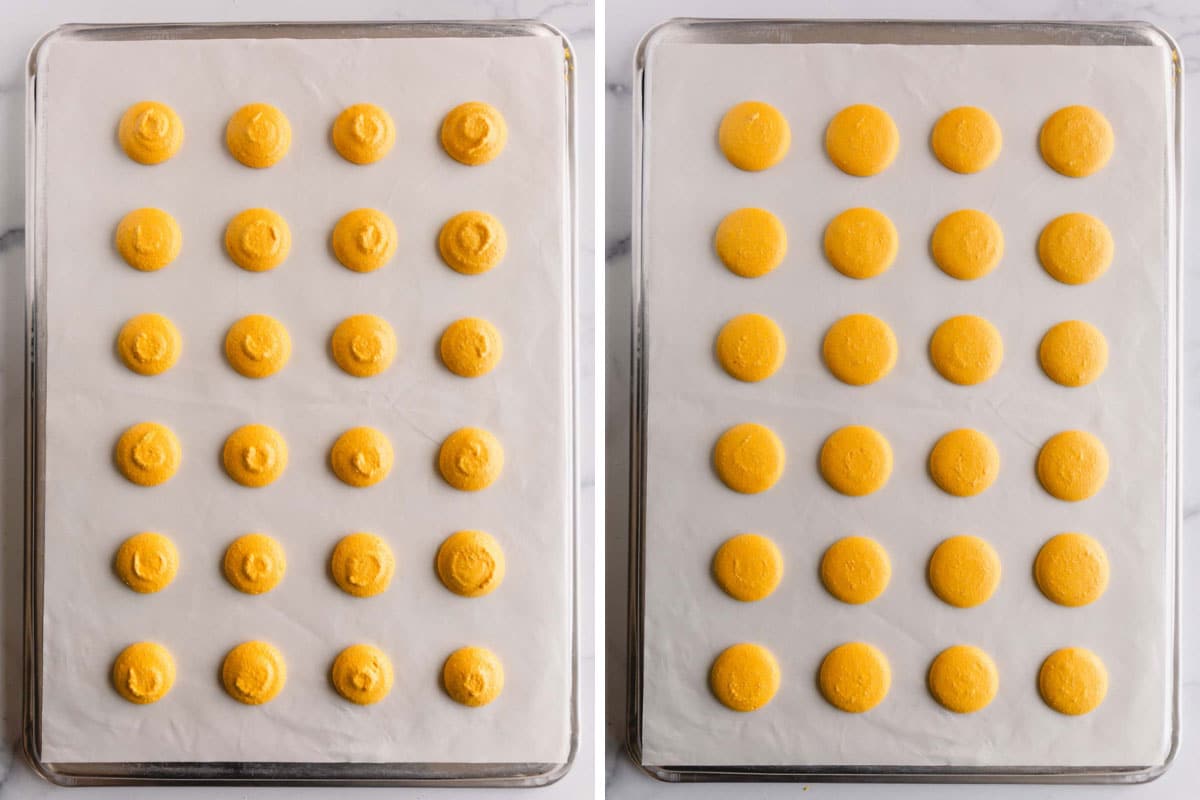
- Bake the lemon macaron shells at 300°F (conventional, top and bottom heat) for about 18 minutes, one sheet at a time.
- Cool completely on the baking sheets before peeling them off the parchment paper.
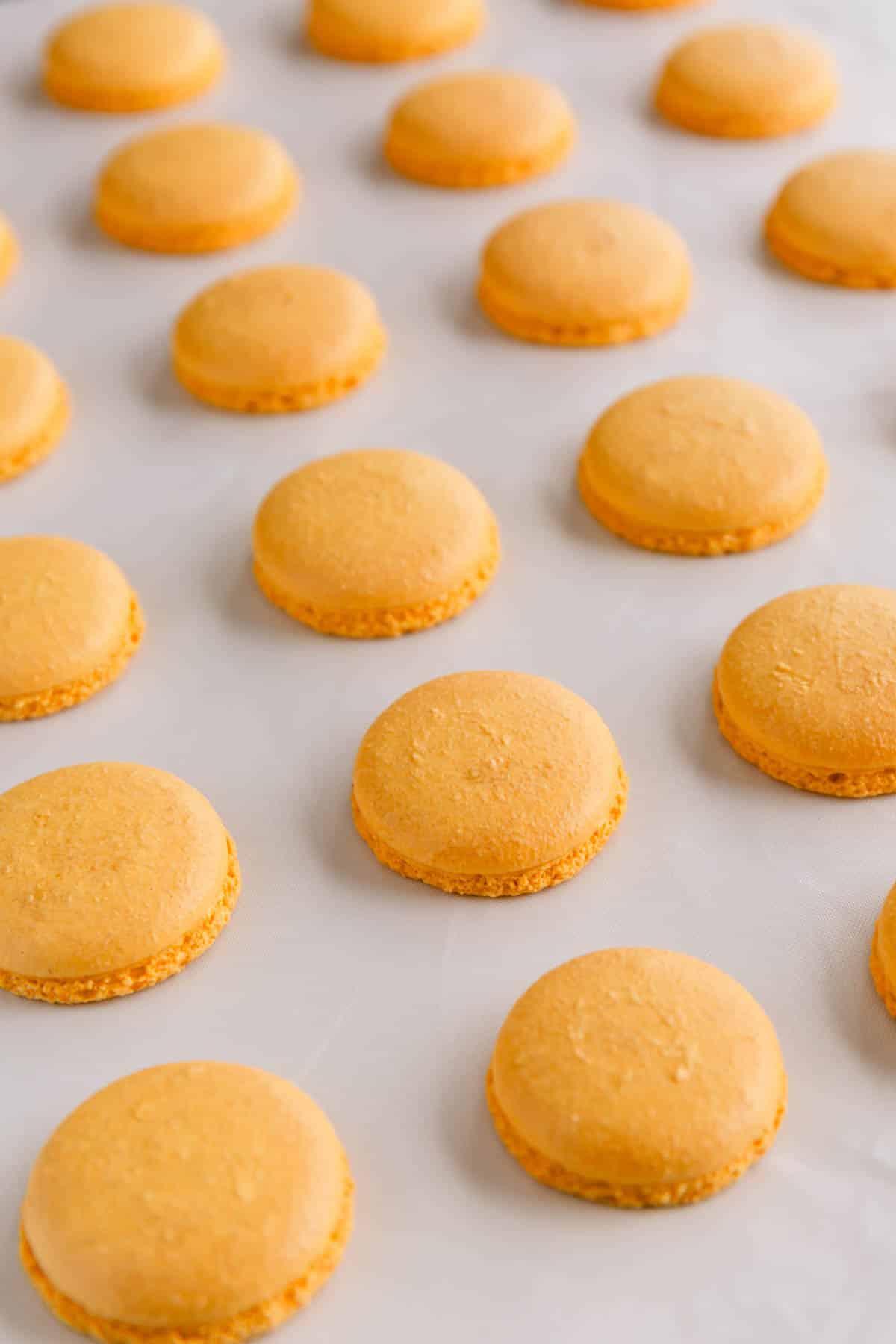
5. Make lemon buttercream:
While the lemon French macarons bake and cool, make the lemon buttercream.
- In a bowl with the whisk attachment, beat the butter until light and fluffy.
- Add the remaining ingredients and beat until well combined. Transfer the buttercream into a pastry bag.
6. Fill and mature the macarons:
- Peel the cooled macarons off the parchment paper and pair the shells by size.
- Pipe a dollop of lemon buttercream on one shell and place the second shell on top. Gently squeeze so the filling reaches the edges. (Alternatively, you can pipe a ring of butterm and fill the middle with lemon curd, if desired.)
- Arrange the filled macarons in an airtight container and refrigerate for 24 hour to mature.
- Bring the matured macarons to room temperature for about 30 minutes and enjoy!
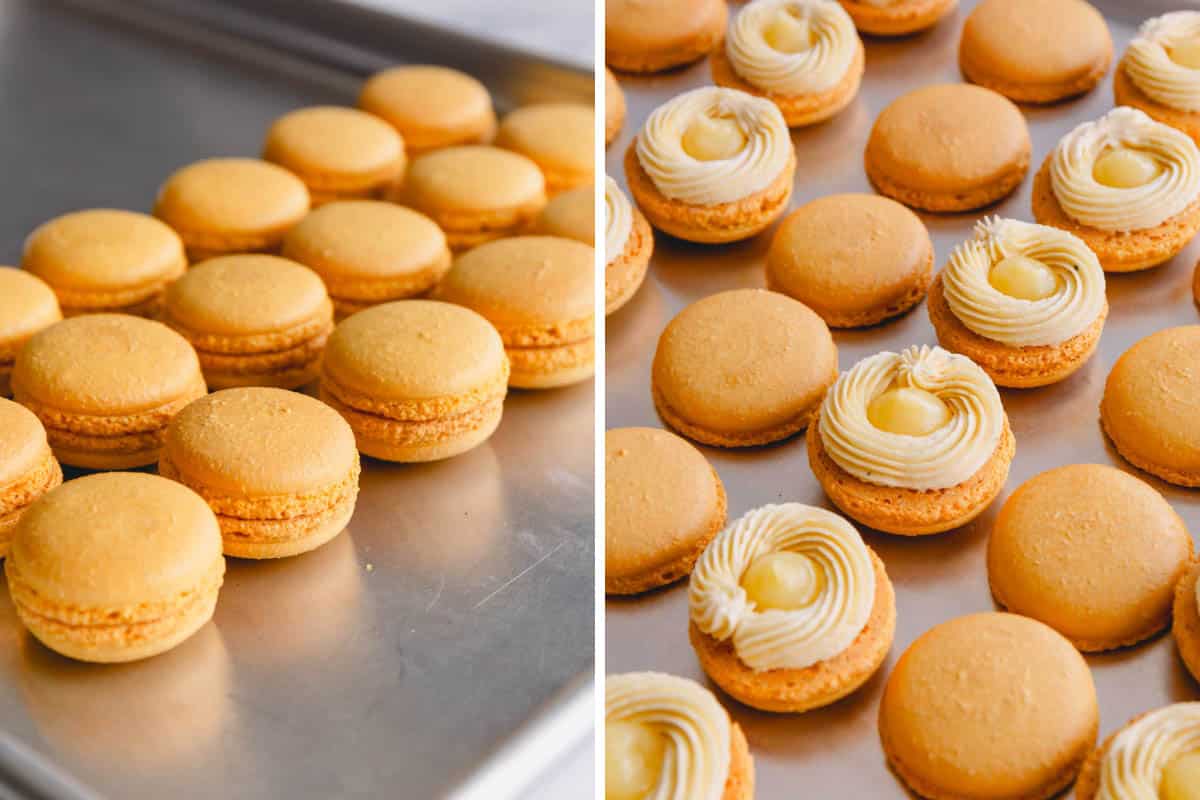
lemon curd
You can use my homemade lemon curd recipe. Simply add 2 tablespoons of cornstarch alond with the sugar for slightly thicker consistency.
Macaron Tips for Success:
- Be sure to use gel food coloring, excess liquid can mess up the meringue!
- Don’t over-mix the macaron batter. Over-mixed batter is runny and shells won’t hold its shape. Check the consistency often!
- French macarons taste the best 1-2 days after making them. This process is also called maturing.
- For more macaron tips, check out my Macaron Masterclass page.
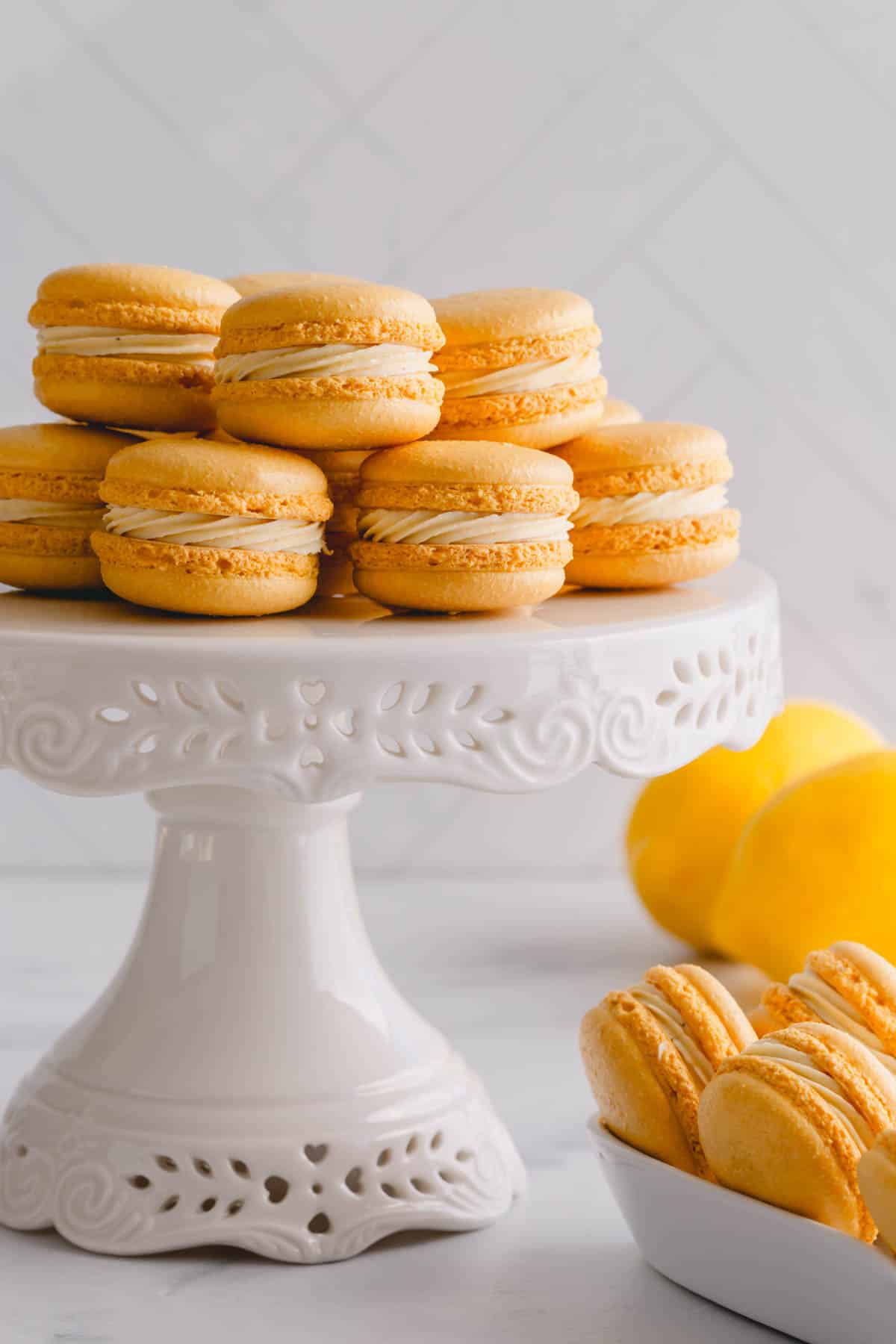
Make-Ahead Tips:
Since macarons taste better on day two, making them ahead is preferred. You can store them ready-to-eat or ready-to-fill.
- Refrigerate the filled macarons for up to 5 days in an airtight container.
- You can freeze assembled macarons for up to 3-6 months. (3 months tops, if you’re selling macarons. And if you’re consuming yourself, you can freeze for up to 6 months.)
- You can also freeze plain shells and fill them later, as needed. Lemon pairs well with vanilla, blueberry, and pistachio buttercream.
Storing Tips:
- Store the filled macarons in a dry, airtight container. If there’s any moisture, it will transfer to the macarons and make them soggy.
- Remove the macarons from the refrigerator 30 minutes before serving. Macarons are best at room temperature!
- Don’t store these delicate cookies in bags. They are more likely to crack or break this way.
Macaron FAQs:
There are several potential causes for macarons not developing feet. For example, excess moisture in the batter, weak meringue, humid environment, shells weren’t rested long enough, or low oven temperature. Check out my macaron troubleshooting guide on how to fix this issue.
If your lemon macarons crack on top, you may need to check your oven temperature. If your oven runs hot, or if it has hot spots, it could cause cracking. Read my troubleshooting steps for cracked macarons.
If you loved these lemon macarons, try these delicious pistachio, s’mores, red velvet, and cotton candy macarons!
Lemon Macarons Video Tutorial
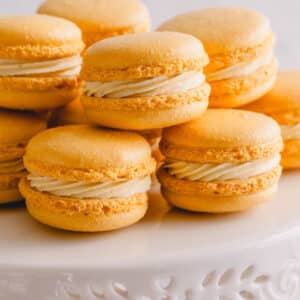
Lemon French Macarons
Ingredients
For macaron shells:
- 100 g super fine almond flour Note 1
- 65 g powdered sugar Note 2
- 70 g egg whites at room temperature Note 3
- 75 g super fine granulated sugar Note 4
- ¼ teaspoon cream of tartar optional Note 5
- ¼ teaspoon coarse kosher salt
- ½ teaspoon fresh lemon juice Note 6
- ¼ teaspoon yellow gel food coloring Note 7
- 1 teaspoon lemon zest
For lemon buttercream:
- 80 g unsalted butter at room temperature
- 130 g powdered sugar sifted
- 1 tablespoon fresh lemon juice
- 1 teaspoon lemon zest
- 1/8 teaspoon coarse kosher salt
Helpful Equipment:
- Pastry bag with Wilton Extra Large Round Tip #1
Instructions
To make macaron shells:
- Preheat the oven to 300°F (150°C). Line 2 baking sheets with parchment paper, or teflon sheet, or silicone mat.
- To prepare dry ingredients, sift together almond flour and powdered sugar twice. Note: If you have up to 2 tablespoons of chunky dry ingredients left in the sifter, you don't have to replace it. Simply discard those chunky bits.
- To make meringue, in a clean mixing bowl with a whisk attachment, combine egg whites, granulated sugar, cream of tartar and salt and beat the mixture on medium speed until soft peaks form. (I set it to speed 4 on my KitchenAid stand mixer. It takes 30-40 minutes to whip the meringue, but it's well worth it for nice and full shells.)
- When the meringue reaches soft peaks, add lemon juice and a few drops of yellow gel food coloring.
- Continue beating the egg whites on the same medium low speed until hard peaks form. Visual cues: Meringue should ball up inside the whisk, and when you lift the whisk, the meringue should hold a pointy end and have sharp ribs.
- To make batter, add lemon zest and sift almond flour mixture into the meringue. Using a silicone spatula, fold the dry ingredients into the meringue until fully incorporated. Then continue to fold the batter until it’s runny enough to draw a figure eight. To test, take a small amount of batter and drop it into the bowl. If the small peaks dissolve into the batter on its own in about 10 seconds, the batter is ready. If not, fold couple more times and test again. Be careful not to over-fold the batter. (TIP: Making french macarons is all about the technique. This is one of the most crucial step. Let me try to describe the folding motion as best as I can: run the spatula clockwise from the bottom, up around the sides and cut the batter in half. If you’re beginner macaron-baker, I suggest to count every fold. It takes roughly about 50 folds to reach the proper consistency. After 50 folds, start testing the batter, and continue testing after every couple folds.)
- To pipe macaron shells, transfer the batter into a pastry bag, fitted with a round tip. (I used this Wilton 2A tip.)
- Hold the pastry bag at straight 90° angle and pipe about 1.5-inch rounds about an inch apart on prepared baking sheets. (TIP 2: Download my free macaron template. Simply pipe the batter to fill inner circle.)
- Tap the baking sheets firmly on the counter (or using your hand) a few times to get rid of any air bubbles. You can also use a toothpick to burst some large air bubbles. This step ensures smooth tops.
- Let the macarons rest on the counter for 15 minutes before baking.
- To bake, working one baking sheet at a time, place one tray with macarons on the middle rack. (TIP: To prevent browning, place an empty baking sheet on top rack to shield the heat.) Bake for about 15-18 minutes. It’ll take longer for larger macarons. To test for doneness, touch a macaron lightly and try to move it. If it slides and wobbles, bake a minute or so longer. The cooked macarons should be firm to touch and the base shouldn’t move. (TIP: It’s always better to slightly over-bake macarons than under-bake them!)
- Cool macarons complete and then remove the shells from the parchment paper. (TIP: Don't remove the shells while warm, you may risk breaking the shells, or the bottom might get stuck to the baking surface.)
To make lemon buttercream:
- In a mixing bowl with a whisk attachment, beat the butter until fluffy. Then add powdered sugar, lemon juice, lemon zest and salt and beat until well combined.
To assemble macarons:
- Pair the cooled macaron shells by size and arrange them on a wire rack. Line them up so that bottom shells are upside down.
- Pipe a dollop of filling on bottom shells. Place the top shell over the filling and press lightly so the filling spreads till the edges.
- Store the filled macarons in an airtight container in the fridge for at least 24 hours to mature, which allows the filling to soften and flavor the shells.
- To serve, bring the macarons out about 30 minutes prior to serving.
- Store the macarons in the fridge in an airtight container for up to 5 days, or freeze for up to 6 month.
Tips & Notes
Nutrition
This recipe was originally published on May 5th, 2014.

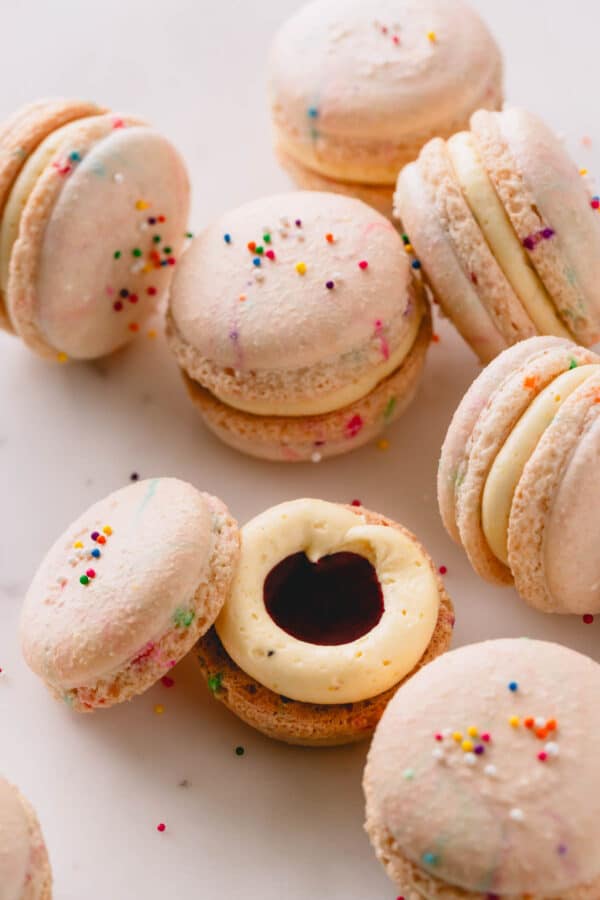
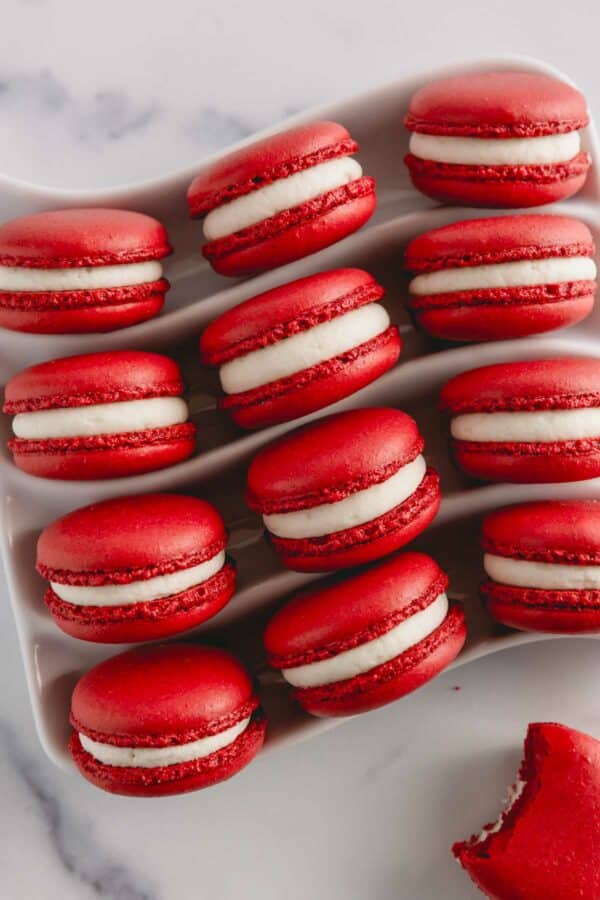
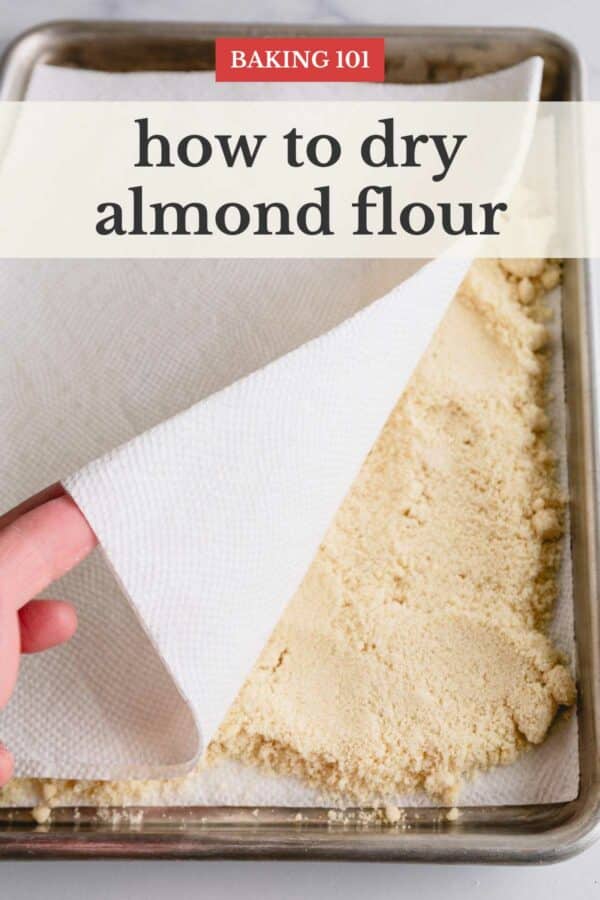


These are soooo good! Thank you Shinee for sharing this recipes with us! I also tried making lime macarons using the same method, turned out perfect, I loved both flavors! Plz post more flavors!
Mmm, lime macarons sound amazing! So glad you got to try these and loved it. I have lots of other flavors on the blog. You can check them all out here. More flavors are also coming. Stay tuned. 😉
Hi! I’m Olivia and I tried making these for the first time and they turned out great, but mine had little bits of almonds from the almond flour. Is this something I can fix or not? Thanks!!
Hi, Olivia! So glad you’ve tried and love the recipe. I have to ask couple questions to answer your question. What kind of almond flour did you use, homemade or store-bought? If you made your own almond flour, I’d suggest to process it a bit more so it’s finer. Also, don’t skip the sifting steps, because it’s imperative for fine-textured macarons. You should toss (or save for cereal or smoothie) the chunky bits of almond flour that’s left in the sifter. Hope this helps. If you got some photos, I’d love to see them. Share on Instagram with #sweetandsavorybyshinee. 🙂
Hey, thanks for this great recipe! I was curious if you can substitute the lemon buttercream filling with a different type of buttercream or filling? Also, does his recipe work well in high altitude? Otherwise, this recipe has been excactly what I have been looking for!
Hi, Allison. Yes, you can use any buttercream or filling as you wish. Unfortunately, I can’t advise on the altitude, as I’ve never tested this recipe in that climate. If you try it, let me know how it works out, so others in high altitude would know in the future. Thanks!!
Today I tried making the macarons (For the first time) and they are delicious! They made perfect feet and had delightful flavor. The only problem that occured is the batter seemed quite thick, no matter how much I folded it, and as a result the tips from the top of the shells stood up a fair bit. But otherwise I highly enjoyed this recipe and will be sure to make these macarons again.
Congrats, Allison. So glad to hear your first try was a success! And it’s so interesting to hear that the batter was thick. I’ve gotten similar comment on my other macaron recipes, and I couldn’t recreate the problem. Maybe the high altitude is the culprit. I’ll have to follow up with other commenters to investigate further. Thanks for coming back and letting me know.
Hello, thanks for sharing this recipe. Mine turned out with feet and all, but I thought the macaroon was a bit chewy. I don’t know if it was because i followed the cup measurement. I looked at the ratio of the cup measurement and the Gram being inconsistence. You called for a cup of flour say 100 gr, the 3/4 cup of powder sugar and also stated 100gr. Not sure which one is correct. Can you please clarify. Thanks. The filling was amazing though. I want to get the shell right.
Hi, Vivian. Thanks for trying my recipe. What do you mean by chewy? Like sticky chewy or something? In my opinion, french macarons are meant to be chewy but in a good way. The measurements are correct both by cup and weight. The reason for discrepancy is due to density. 1 cup of almond flour won’t weight the same as 1 cup of powdered sugar. This also applies to all dry ingredients in general, that’s why it’s best to weigh the dry ingredients. And I’m so glad to hear you loved the filing, I love that lemon buttercream so much, and I’m not even a buttercream fan. 🙂 I have a few other detailed posts regarding making macarons that you may find helpful for your next batch: French Macaron 101 and 8 Tools You Need to Make Perfect Macarons. And please don’t hesitate to ask any more question.
Hi! I’m a huge fan. can i double the amount of ingredients to make more batches of macaron? Is that a good idea? I’m going to host a party and i need at least 150pcs- 200. Thank you
Hi there! If this is your first try at making macarons, I wouldn’t recommend doubling the recipe. If you’ve already familiar with the technique, I think you could. One thing I would suggest is to fill the pastry bag with half of the batter at a time, because while you’re piping the macarons, you’re squeezing the batter, which thins it out a bit. And have fun baking them. Sounds like you’re going to have a fun party! 🙂
Made macaron using your recipe tonight. The macaron came out a bit chewy after baking for 19 minutes. I wonder why. Using Wilton yellow gel food coloring but the color turn out more like over bake color. Could you advise me on this?
Hi, Ploy! How chewy were the macarons? Like sticky chewy, or tough chewy? In my opinion, you kind of want the macarons to be on chewy side, but it’s a good kind of chewy. As for the color, did the macarons turn brownish? It might have been over-baked, or maybe your oven runs a bit too hot. Next time, I’d try increasing the amount of coloring, and then shielding the macarons from the top by placing another rack with an empty baking sheet above the macarons. Hope this helps.
Hey there! I tried this recipe but the only difference is that I increased the portion for each ingredient in the batter by 1.5x.
This was my second time making macarons but sadly, it failed. My macarons have no feet!!! 🙁
Is there any reason(s) why the feet failed to develop?
Thank you so much!
Hi, Dennis! So glad you tried the recipe. It’s tricky to change the amount of the recipe, especially with finicky macarons. There’re number of reasons to why macarons bake without feed. Check out my Macaron Troubleshooting Guide and I hope that’ll help to find out the issue.
Thank you for posting such an easy yet AMAZING recipe! I’ve always heard that French Macarons were a little testy so I was completely expecting a first failed attempt but these were awesome!! They were the perfect consistency thanks to your photos and your directions! Thank you for sharing such a great recipe! For one batch, I added strawberry jam to the icing mixture and so good. There are so many possibilities with this recipe! Thank you again!!!
Heidi, so happy to hear you tried and loved the recipe. You’re right, there are so many possibilities! Strawberry jam sounds awesome. Check out my other macaron recipes for inspiration. Thanks for leaving your feedback, Heidi!
Hi there! I loved the recipe and it was super easy to follow. I was wondering if any of your test batches came out brown around the edges? I just pulled mine out from a 300* oven only after 15 minutes and most, if not all, of them are brown around the edges. On my next batch should I lower the temperature or possibly leave them in for less amount of time? Thanks again!
Hi, Liz! So glad you tried and loved my recipe. Browning is usually due to high oven temp. It’s pretty common for an oven to vary 50 degrees, so it’s possible your oven runs hotter than specified. So I’d suggest to bake the macarons 25°F lower than the specified temp and see if it helps with browning. Hope this helps. And if you happened to have a photo I’d love to see it. You can share it on social media with #sweetandsavorybyshinee, or simply e-mail me.
Hi, i am just starting to learn to make macarons. i will try your lemon ones. They look fabulous. Where did you get the ceramic holder from? super cute. Thanks
Hi, Michelle! So happy you’re going to try making macarons. It’s such a fun process. Make sure to read my French Macaron 101 post before you start. I got that dish at a thrift store.